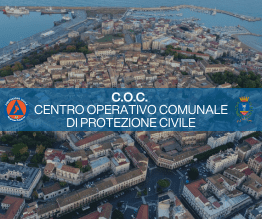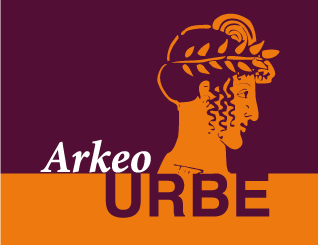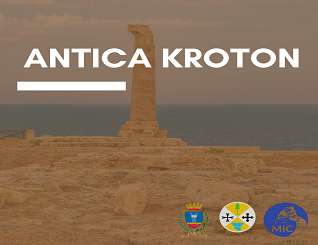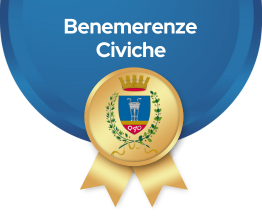Arte e Cultura

- Scultura del viso di Apollo
Le coste basse e sabbiose del litorale ionico sono interrotte nei pressi di Crotone da frastagliamenti rocciosi di calcarenite fossilifera, che si intervallano alle caratteristiche dune di argilla azzurra.
Queste falesie che sono comprese tra Capo Alice e Capo Rizzuto, sono noti dall'antichità come promontori Japigi, attorno ai quali sono fioriti numerosi miti legati per lo più ai nostoi degli eroi greci, alle gesta di Heracle, al culto solare di Apollo e a quello di Hera.
Anche il fiume Neto è oggetto di una leggenda. Si narra che le navi troiane navigando in cerca di una terra ospitale, che potesse diventare una nuova patria, si fermassero a fare rifornimento di viveri ed acqua nei pressi del fiume. Le donne troiane, incantate dalla bellezza dei luoghi e stanche delle lunghe peregrinazioni, avendo scelto di rimanere, contro il parere dei loro uomini, incendiarono le navi. Da questo episodio il fiume prese il nome di Nauaethos, che deriva dalle parole greche nais (nave) e aeto (ardo).
Un'altra leggenda riporta lo stesso fatto, attribuendolo però alle sorelle del re Priamo, prigioniere degli Achei, che avrebbero dato fuoco alle navi, per sottrarsi alla schiavitù e con successive lusinghe convinsero i loro carcerieri a non riprendere il mare.
Come il fiume Neto, anche il piccolo corso dell'Esaro ha la sua leggenda: il giovanetto Esaro andava a caccia di cervi, che erano numerosi nella zona, ed inseguì una cerva che portava sul collo un nastro di consacrazione. Esaro incurante la ferì, la cerva si buttò nel fiume, egli la inseguì e sprofondò nel fiume, che poi prenderà il suo nome.
La testa laureata dell'eroe Aisaros accompagnata dal suo nome, decora il dritto di una delle monete d'argento di Crotone, mentre su un'altra di bronzo si vede la testa del dio del fiume imberbe e con la fronte munita di due piccole corna.
Alla sorgente del fiume, sita a qualche chilometro dalla città vi era uno dei templi extramuranei dedicato ad una divinità femminile.

- Statua di Ercole
Crotone ed il promontorio Lacinio sono oggetto di numerosi miti, che intervengono in varie fasi della vita della città, a cominciare dalla sua fondazione, legata alculto di Apollo, attraverso il responso dato dalla Pizia di Delfi al suo ecista, Miscello da Ripe.
I grandi santuari dell'antichità praticavano l'arte della divinazione a scopo sociale, politico e religioso e per questo venivano interrogati prima che fossero intraprese imprese importanti, quale la fondazione di una città.
Del resto i racconti letterari sono confermati dalle antiche monete crotoniati, gli staderi incusi, che già dal VI° sec. a.C. hanno come emblema dominante iltripode delfico, legato al culto di Apollo, particolarmente venerato in città e legato poi alle dottrine di Pitagora, di cui si diceva che fosse l'incarnazione di Apollo Iperboreo.
La fondazione mitica fa intervenire Ercole come ecista della città. Questi sono i fatti narrati: Ercole, con i suoi buoi sacri ad Iperione si ferma a Capo Lacinio, ospitato dall'eroe locale Kroton, genero di Lacinio, che a sua volta è fratello di Alcinoo, l'omerico re dei Feaci.
Un ladrone nella notte cerca di rubare la mandria, Ercole interviene e per errore uccide l'amico Kroton. Ercole riunisce la popolazione indigena e, dopo aver eretto una tomba monumentale, vaticina che su quella tomba sarebbe sorta una famosa città che avrebbe eternato il nome del morto.

- Dipinto della nave di Ulisse
Tra gli eroi pellegrini, approdati presso il Lacinio, vi è anche Ulisse, l'eroe dal "multiforme ingegno", infatti gli scoliasti hanno identificato in una delle due isolette che le carte antiche riportano nel tratto di mare antistante alla costa crotonese e note come Dioscoron e Calipso, l'isola di Ogigia di cui parla Omero. Era questa l'isola in cui era la dimora di Calipso, la ninfa dal"crin ricciuto" (da questo epiteto forse deriva il toponimo Capo Rizzuto, dato ad uno dei capi).
Forse gli scoliasti, nel collocare in questi posti l'estesa isola di Ogigia, tennero conto che si trovavano in linea d'aria ad est di Corfù, dove, narra Omero, Ulisse fu poi sospinto dal vento. Tuttavia è difficile riconoscere lungo la costa l'esistenza di una grande isola, con lussureggiante vegetazione, qual è l'Ogigia descritta da Omero, anche se è certo che nelle vicinanze dei promontori Japigi, vi fossero nell'antichità molti brandelli di terre emerse e di isole piccole.
Oltre alle fonti classiche, quali Plinio e Pseudo Scilace, che collocano a dieci miglie romane dalla costa un arcipelago di cinque isolette, ed alla carte antiche che riportano le due isole menzionate, l'esame delle carte nautiche attuali, che riportano nei paraggi delle secche con dislivelli che arrivano a 300 metri, sembra convalidare tali fonti.

- Tempio greco
Moltissimi culti accessori e leggende sono legati al grande tempio di Hera Lacinia a Capocolonna: il culto di Tetiche si narra avesse regalato ad Hera il promontorio e il "vago bosco" secondo l'espressione di Timeo; quello di suo figlio Achille in memoria dal quale le donne crotoniati usavano vestire di nero un giorno all'anno, e recatesi al tempio, manifestavano il loro dolore per la morte del grande Achille "alto nove cubiti". Altro mito legato al tempio del Lacinio è quello di Elena, di cui, si narra, vi fosse una grande immagine dipinta, che il famoso pittore Zeusi aveva realizzato prendendo a modello le fanciulle crotonesi, la cui bellezza era proverbiale, e ritraendo di ciascuno i particolari più belli.
La leggenda intorno al tempio di Hera Lacinia sono innumerevoli: per esempio, si narra che se qualcuno incideva il suo nome su una tegola del tempio, l'iscrizione sarebbe durata fino alla morte dell'uomo che l'aveva scritta, che nel vestibolo del tempio vi fosse un altare le cui ceneri nessun vento poteva smuovere e che Annibale vi avesse dedicata un'ara con l'iscrizione delle sue imprese in caratteri punici e greci.
Tito Livio così descrive il tempio: "Distava dalla nobile città sei miglia il tempio di Giunone Lacinia, più nobile della stessa città, santo presso tutti i popoli. Ivi era un bosco sacro con fitta vegetazione di alberi di alti abeti; in mezzo al recinto aveva lieti pascoli dove ogni genere di bestiame sacro alla dea pascolava senza alcun pastore; a notte le greggi, separatamente, ciascuno secondo il suo genere, ritornavano alle stalle, giammai violati dalle insidie delle fiere o da inganno degli uomini. Pertanto, ricavati grandi frutti da questo bestiame fu fatta una colonna d'oro massiccio e fu consacrata, ed il tempio fu famoso non solo per la santità, ma pure per le ricchezze".

- Scultura del viso di Annibale
Tali ricchezze tentarono il vincitore Annibale, come riporta Cicerone. "Celio scrive che Annibale volendo impadronirsi della colonna d'oro, che si trovava nel tempio di Giunone, l'avesse fatta perforare ed avendola trovata solida, stabilisce di portarla via. A lui la notte seguente, durante il sonno, apparve Giunone che gli ordinò di non fare ciò, e lo minacciò che se avesse dato seguito alla cosa avrebbe provveduto affinché fosse privato anche dell'occhio dal quale vedeva bene: e questo consiglio non fu trascurato dall'uomo intelligente. Pertanto da quell'oro che era stato tolto, Annibale curò che fosse fatta una giovenca e la collocò sopra un'alta colonna".
Il nome di Annibale è legato anche a Le Castella, che anticamente si chiamavano Castra Hannibalis, perché, si tramanda, che in questa località il condottiero cartaginese avesse posto i propri accampamenti e che qua fossero accaduti tragici avvenimenti.
Pare che Annibale, avendo ricevuto da Cartagine l'ordine di ritirarsi, preparava l'imbarco delle sue truppe. Avendo con sé un contigente di mercenari italici e non volendo lasciarli liberi, nel timore che potessero passare al nemico, ordinò loro di accompagnarlo in Africa.
Gli Italici si rifiutarono e Annibale, condotti sulla riva, li fece massacrare.
Ancora oggi il mito rivive rielaborato nelle leggende legate ai riti mariani. Una leggenda popolare racconta che la Madonna di Crotone è sorella della Madonna Greca di Isola e che, disperse in vari luoghi, vi sono in tutto sette sorelle. Al di là del sorriso che la tradizione suscita, come non rammentare il mito della Pleiadi, delle sette sorelle diventate costellazione?

- Facial sculpture of Apollo
The low and coasts near Crotone are interrupted by the rocky limestone fossiliferous microfractures, which are interspersed with blue clay dunes.
These cliffs are between Capo Alice and Capo Rizzuto, known from antiquity as theJapigi headlands, around which have flourished many myths related mostly to the nostoi of the Greek heroes, the exploits of Heracles, the solar cult of Apollo and that of Hera. Even the river Neto is the subject of a legend. It is said that the Trojan ships sailing in search of a hospitable land, which could become a new home, stopped to refuel with food and water near the river.
The Trojan women, enchanted by the beauty of the places and tired of the long peregrinations, having chosen to stay, against the advice of their men, set fire to the ships. From this episode the river was named Nauaethos, which is derived from the Greek words nais (ship) and aeto (burn). Another legend reports the same fact, but attributing the sisters of King Priam, prisoners of the Achaeans, who would set fire to the ships, to escape slavery and with subsequent flattery they convinced their captors not to sail.
As the river Neto, the little course Esaro has its own legend: Esaro the young man went hunting for deer, which were numerous in the area, and chased a doe that bore a dedication ribbon on the neck. Esaro hurt it and the deer threw itself into the river, he chased it and sank into the river, which then took his name.
The graduate head of the hero Aisaros, accompanied by his name, decorates the obverse of one of the silver coins of Croton, while another bronze one sees the head of the river god beardless and the front provided with two small horns.
At the source of the river, located a few kilometers from the city there was one of the temples dedicated to a female deity.

- Statue of Hercules
Crotone and the promontory Lacinio are the subject of numerous myths, which intervene at various stages of the city's life, starting from its foundation, linked to the cult of Apollo, through the response given by the Pythia of Delphi to its ecista, Miscello from Ripe.
The great sanctuaries of antiquity practiced the art of divination with a social, political and religious purpose and so were interrogated before any important enterprises were undertaken, like the foundation of a city.
Besides literary stories are confirmed by Crotonian ancient coins, including the staderi, who already from the sixth century BC have as dominant emblem the Delphic tripod, linked to the cult of Apollo, particularly revered in the city and then tied to the doctrines of Pythagoras, who was said to be the incarnation of Apollo Hyperborean.
The legendary foundation has Hercules act as ecista of the city. These are the facts narrated: Hercules, with its sacred oxen to Hyperion stops at CapoLacinio, hosted by the local hero Kroton, son of Lacinio, which in turn is the brother of Alcinous, the Homeric king of the Phoenicians.
A thief in the night tries to steal the herd, Hercules intervenes and accidentally kills his friend Kroton. Hercules brings together the indigenous population and after erecting a monumental tomb, which foretold on a grave that would sort a famous city that would have immortalized the name of the dead man.

- Painting of Ulysses' ship
Among the heroes, landed at the Lacinio, there is also Ulysses, the hero of the "multi-faceted genius", in fact, the annotators have identified one of the two islands that the old cards have shown in the stretch of the sea off the Crotonese coast known as Dioscoron and Calypso. It is the island of Ogygia mentioned by Homer. It was this island where the home of Calypso was, the nymph from "curly tresses" (by this epithet perhaps derives its name Capo Rizzuto, given to one of the leaders). Perhaps scholiasts to place in these places the largest island of Ogygia, heeded that were in the air line to the east of Corfu, where, according to Homer, Ulysses was then driven by wind. However it is difficult to recognize along the coast the existence of a large island, with lush vegetation, where Ogigia is described by Homer, although it is certain that in the vicinity of the Japigi headlands, there were, in antiquity, many bits of dry land and small islands.
In addition to traditional sources such as Pliny and Pseudo Scylax, that place ten Roman miles from the coast an archipelago of five islands, and the old maps that show the two mentioned islands, the examination of current nautical charts, which show nearby shallows with differences in level 300 meters, seems to validate these sources.

- Greek temple
Many cults accessories and legends are related to the great temple of Hera Lacinia at Capocolonna: the cult of derers was said to have given to Hera the headland and the "vague forest" according to the expression of Timaeus; to his son Achille in memory from which the Crotonian women used to wear black, one day a year, and they went to the temple, they expressed their sorrow for the death of the great Achilles' nine cubits tall" Another myth related to the temple of Lacinio is that of Elena, of whom is narrated, there was a large painted image, that the famous Zeuxis had made modeled on the Crotone maidens, whose beauty was legendary, and portraying each detail more beautifully . The legend around the temple of Hera Lacinia are numerous: for example, it is said that if someone accounted his name on a tile of the temple, the enrollment would last until the death of the man who had written that in the temple vestibule where there was an altar whose ashes no wind could move and that Hannibal had dedicated an altar with the inscription of his exploits in Phoenician and Greek characters.
Tito Livio thus describes the temple, "was near the noble town six miles the Temple of Juno Lacinia, noblest of the same city, holy to all peoples. Therein was a sacred forest with dense vegetation of tall fir trees in the middle of the fence he had pleased pastures where every kind of sacred cattle to grazing goddess with no shepherd night the flocks, separately, each according to its kind, returning to the stables, never violated by the fairs pitfalls, or malice of men. Therefore, great fruits obtained from such livestock it was made a solid gold column and was consecrated, and the temple was famous not only for holiness, but also for the wealth "

- Facial sculpture of Hannibal
Such riches tried the winner Hannibal, as reported by Cicero. "Celio writes that Hannibal wanting to seize the gold column, which was located in the temple of Juno, he had made to drill and having found it solid, he established to carry it on.
To him the following night, while sleeping, appeared Juno that order him to do this, and she threatened that if he followed up on what would provide until he was also deprived of the eye where he could see, and this advice was not overlooked by the intelligent man.
Therefore from that gold had been removed, Hannibal cared that it was made a heifer and he placed it above another column. "
It seems that Hannibal, having received from Carthage the order to retreat, preparing the embarkation of his troops. Having with him a contingent of Italian mercenaries and not wanting to leave them free, for fear that they could go to the enemy, ordered them to accompany him to Africa.
The Italians refused and Hannibal, conducted on the shore, he massacred them.
Even today, the myth lives reworked in the legends related to Marian rites. A popular legend narrates that the Madonna of Crotone is the sister of the Greek Madonna of Isola and, scattered in various places, there are a total of seven sisters. Beyond the smile that evokes the tradition, as recalled by the myth of Pleadi, became the constellation of the seven sisters?
Fonte: Settore Turismo
Data ultimo aggiornamento: 17 Agosto 2017
Revisionato da: Alessandra Vrenna
Traduzione a cura di:



















